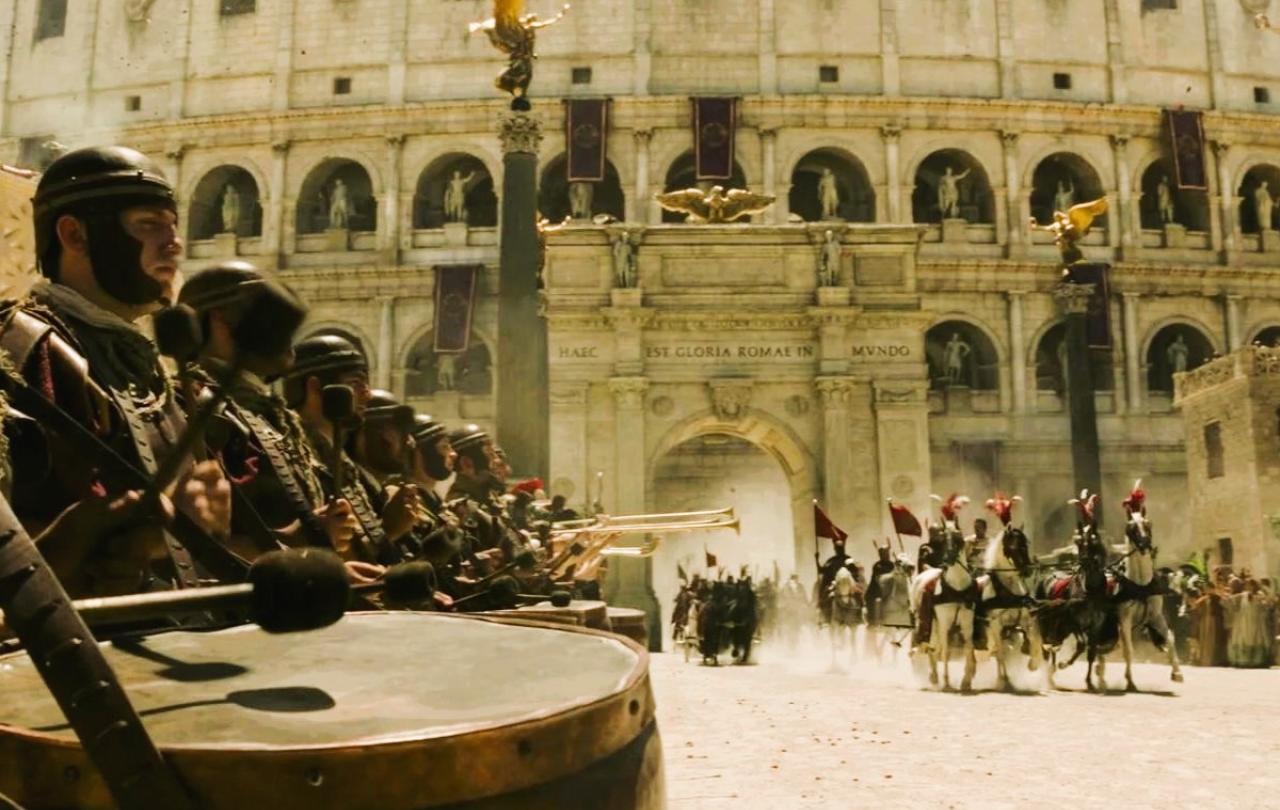
I left the theatre quite disappointed by what I had witnessed. The original Gladiator, the Ridley Scott masterpiece, remains one of the most captivating historical epics in cinema. Every time I watch it, I feel I am stepping into another time. The sequel, by contrast, baffled me by how out of time it was, jarring me out of the action by its historical inaccuracies.
Whether it was the sharks in the Coliseum or newspapers a thousand years or so before their invention, these moments reminded me I was not witnessing an entirely truthful representation of Roman society. Perhaps I am asking too much - a movie is after all, a representation, and may tell us more about ourselves than the era it portrays.
But Gladiator II’s biggest anachronism isn’t newspapers or sharks, but the presence of Christian values in a pre-Christianised Rome.
The backdrop for the film is that the evil and insane twin Emperors Geta and Caracalla, have spread chaos across the world, relentlessly conquering foreign lands, imposing their will on others - in other words, doing what Romans usually do.
Against the emperors are a group of Romans who are tired with all this conquering and violence and want to build a new Rome. Throughout the film, they remind the audience constantly of Marcus Aurelius, the historic Roman emperor from the first film, who had a dream - ‘the dream that was Rome’. Rome would be a republic. But not just any republic.
Lucius, the hero of the sequel, in his final speech to the Roman army, sets forth what this dream could look like: ‘A city for the many, and refuge to those in need.’ The entire legion lay down their arms and cheer triumphantly for the dawn of this new Rome.
All of this is starting to sound rather close to home. Perhaps Lucius should march to the US border next.
We can imagine offscreen, Lucius walks into the Roman equivalent of the World Humanist Congress, to write a charter to declare the worth and dignity of every individual, and their right to freedom.
Anyone watching who didn’t know their history might be forgiven for assuming that this would mean an end to all the conquering, and the beginning of a just and equal society for all, regardless of gender, social status and nationality.
Unfortunately, this was not the dream of the Roman republic, even before ‘tyrannical’ emperors started ruling. Many of Rome’s biggest conquests happened during the era of the Republic. Likewise, democracy in Rome did not extend to all people. Slavery was rife. The dream that was Rome, was to have a group of men subjugate the world, rather than just one or two.
To be fair to Ridley Scott, his Rome has a little bit more nuance than I give him credit. Denzel Washington’s character Macrinus, the gladiator master, stands as a reminder of the hypocrisy of Marcus Aurelius’ ‘dream’. Macrinus was made a slave under Aurelius’ rule, bearing the brand of Aurelius’ visage on his chest, a reminder that he was Roman property.
The only real equality Rome has – Macrinus points out – is that a slave can violently overthrow an emperor. If equality is going to happen in Rome, it won’t be through reasonable persuasion, but violent revolution. And even then, equality won’t have the final say, but rather the oppressed simply becomes the next oppressor. This is the true spirit of Rome: the survival of the strongest.
Gladiator II reminds us that the values we find self-evident today, that Ridley puts into the mouth of Lucius and the other protagonists, were not self-evident to Rome. The dream that was Rome is a dream that we have. But how did we come to have this dream?
We have been shaped by this history in more ways than we know.
There was another revolution, that Gladiator II does not portray (at least not explicitly). This revolution explains why we look back on history wanting to see ideals of equality and justice. The German philosopher Frederick Nietzsche, atheist and nihilist, writes about it in his work The Genealogy of Morality.
Nietzsche describes a war that happened between Judea and Rome. Rome was undoubtedly defeated, Nietzsche claims. Now, before we might accuse Nietzsche of further anachronism (the siege of Jerusalem and the destruction of the Jewish Temple in AD70 come to mind), Nietzsche is in fact speaking of a revolution in values.
He saw that the Roman ideal of ‘the prerogative of the few’: a small group of strong men imposing their will and subjugating others as the master race, was overthrown by the ‘prerogative of the many’ in the ‘slave revolution’. This revolution was brought about by a Jewish man, Jesus of Nazareth, followed by his group of unlikely revolutionaries.
At the centre of this movement was one central image: a man dying on a Roman cross, a punishment meant for slaves and criminals.
God in human flesh dying as a victim of oppression, was an image that gave power to the powerless.
Nobility was no longer found in inflicting suffering, but in enduring it for the sake of others.
Historian Tom Holland writes in his book Dominion: The Making of the Western Mind:
‘The spectacle of Christ being tortured to death had been bait for the powerful. It had persuaded them … that it was their natural inferiors, the hungry and the humble, who deserved to inherit the earth’.
Holland traces this revolution and the ways in which this counter-narrative slowly seeped into Western culture, implanting a concern for the powerless. The welfare state, universal human rights, movements like #MeToo all find their source in this world-rupturing event.
Holland writes elsewhere: ‘The wellspring of humanist values lay not in reason, not in evidence-based thinking, but in history.’
We have been shaped by this history in more ways than we know.
Our generation suffers from cultural amnesia. We forget the reason for how we reason today. Our desire to see Rome (and our own nation, for that matter) become a home for the many and refuge to those in need, is a desire that has been shaped by Christian values.
Join with us - Behind the Seen
Seen & Unseen is free for everyone and is made possible through the generosity of our amazing community of supporters.
If you’re enjoying Seen & Unseen, would you consider making a gift towards our work?
Alongside other benefits (book discounts etc.), you’ll receive an extra fortnightly email from me sharing what I’m reading and my reflections on the ideas that are shaping our times.
Graham Tomlin
Editor-in-Chief





